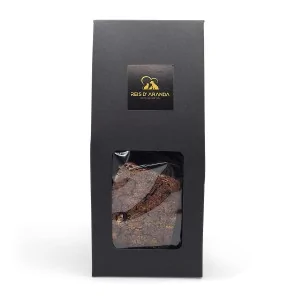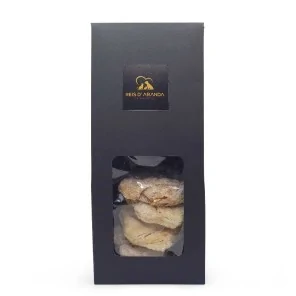The Tornjak originated from genetically homogeneous, almost extinct, indigenous shepherd dogs. These dogs have...
THE ENGLISH BULLDOG
INTRODUCTION
The bulldog, also known as the English Bulldog, is a breed of dog originating in England. Its ancestor, known as the Old English Bulldog, was used in bull-baiting until the mid-17th century, although this practice was banned in 1835. Today, this breed of dog is one of the symbols of England.
THE HISTORY OF THE ENGLISH BULLDOG
The term bulldog was first cited around 1500 in a letter requesting the dispatch of ‘two good bulldogs’.8 The term bulldog, meaning bull dog, derives from the function in which bulldogs were used, namely guarding and controlling wild cattle and fighting bulls for entertainment.
There are many theories about the origin of the original bulldog. Some authors report that the ancient bulldog was related to the bullenbeisser, English mastiff, Spanish bulldog and other dogs of the type, and was therefore more a descendant of the Alano dog.
Another theory speculates that its origin is in the ‘ancient African dog, kelb thal gliet, or Maltese bull dog: a breed imported into England, which crossed with ancient mastiffs gave rise to the old English bulldog.
The bulldog of yesteryear was lighter and more Boxer-like than the stocky bulldog of today; it was purely a sporting animal. It was used in the creation of other breeds such as bullmastiff, boxer, bull terrier and some hounds such as the old type beagle. As a fighting dog it was an animal that would only accept the challenge of larger animals such as bears, bulls and even lions.
The origin of the name is due to the fact that it was a butchers' dog, i.e. its function was to make bulls run, as it was believed that their meat was softer. Although it is probably a deformation of the name Band dog or ‘tough dog’.
The old bulldogs are quite different from today's. The breed was modified through crossbreeding. The breed was modified through crossbreeding with other breeds such as the pug, from which the bulldog inherited its flattened muzzle and plump musculature.
The old bulldogs were dogs of varied appearance, sometimes dogs with elongated muzzles and of all colours. It should be noted that the old bulldog was a working animal and therefore great importance was attached to character.
The origins of the English bulldog go back, like all molossers, to the Tibetan mastiff, which spread throughout the world thanks to the Phoenician navigators. In modern day Britain, the Tibetan Mastiff crossed with local dogs gave rise to a dog that could be compared to a modern day Mastiff and was used to fight the Romans when, in 55 BC, they first attempted to invade the British Isles.
The courage, physical power and resistance to pain displayed by these dogs so impressed the Romans that some of them were taken to Rome to fight in the arena against bears and lions. Years later, they were even used against Christians.
With the fall of the Roman Empire of the Caesars, dogfighting spread throughout Europe. The dogs destined for this purpose were encouraged from puppyhood to bite everything that passed in front of them; the selection was made by breeding only the most robust, brave and aggressive specimens. In this way, a true ‘four-legged war machine’ was created.
Today's English bulldog is a competition oriented animal for beauty shows. It is intelligent, clean and very tame; it is an excellent companion animal.
WHAT IS THE ENGLISH BULLDOG LIKE?
GENERAL APPEARANCE: Short haired, rather heavy, rather short in stature, broad, powerful and compact. Head rather large in proportion to its size, but no part of its body should be of excessive size in relation to the others, thus breaking the general symmetry, making the dog look deformed or interfering with its ability to move. Face relatively short, muzzle broad, blunt and inclined slightly upwards, but not too excessive. Dogs showing respiratory problems are highly undesirable. Body somewhat short, of good structure. Strong, well muscled and robust limbs without tendency to obesity. Hindquarters tall and strong. Females not as well developed as males.
HEAD: Seen from the side, the head appears very high and moderately short from the back to the tip of the nose. Flat forehead with skin on and around the head, slightly loose and subtly wrinkled without excess, never prominent or protruding from the face. The face, from the cheek bones to the nose, relatively short, with skin which may be slightly wrinkled. The distance from the inner corner of the eye (or from the centre of the nasolabial depression between the eyes) to the tip of the nose should not be less than the distance from the tip of the nose to the edge of the lower lip.
CRANIAL REGION:
SKULL: Skull relatively large in circumference. Seen from the front it appears high from the angle of the lower jaw to the top of the skull, also broad and square. From the stop, a furrow extends to the middle of the skull and may continue its line to the vertex.
STOP: Defined.
FACIAL REGION: Seen from the front, the various properties of the face should be equally balanced on both sides of an imaginary centre line.
NOSE: Nose and nostrils large, broad and black, under no circumstances liver, red or brown. Nostrils large, broad and open, with a well defined, vertical and straight line between.
MUZZLE: Muzzle short, broad, upturned, deep from corner of eye to corner of lips. The wrinkle over the nose, if present, complete or broken, must never adversely affect or hide the eyes or nose. Narrow nostrils and heavy wrinkling of the nose are unacceptable and should be severely penalised.
BELPHOS: Thick, broad, deep belfos, covering the sides of the lower jaw, but joining the lower lip in front. Teeth not visible.
JAWS AND TEETH: Jaws broad, strong, square, the lower jaw projecting slightly forward from the upper jaw with a moderate upward inclination. Jaws broad and square with six small front teeth between the canines, in an even row. Canines set wide apart, large strong teeth which should not be seen when the mouth is closed. When viewed from the front the lower jaw is seen exactly under the upper jaw and parallel to it. Cheeks: Cheeks well rounded and extending laterally beyond the eyes.
EYES : Seen from the front, set low in the skull, set well apart from the ears. The eyes and the frontal nasolabial depression are in the same straight line, at right angles to the frontal furrow. The outer corners are set well apart, however, within the outer line of the cheeks. Round, moderate size, neither deep set nor prominent, very dark in colour, almost black, showing no white when viewed directly from the front. Free from obvious eye problems.
EARS: Set on high, i.e. the front edge of each ear (when viewed from the front) touching the edge of the skull at its upper margin, so that they are as wide apart, as high and as wide apart from the eyes as possible. Small, thin ‘rose ears’ is correct, i.e. the inner wrinkles fall back, the upper, inner front edge curving outwards and backwards, showing part of the inside of the ear canal.
NECK: Moderate length, very thick, deep and strong. Well arched at the top, with some loose, thick, wrinkled skin around the throat forming a slight dewlap on each side.
BODY
UPPER LINE: Drops slightly towards the back behind the point of the shoulder blades (this is the lowest part) from where the spine rises to the loin (point higher than the withers) curving again more abruptly towards the tail, forming a slight arch a distinctive feature of the breed.
BACK: Back short, strong, broad at shoulder blade level.
CHEST: Chest broad, prominent and deep. Body with well defined ribs set well back. Chest rounded and deep. Well let down between forelegs. Ribs not being flat on the sides, well rounded.
BOTTOM LINE AND BELLY: Abdomen tucked up and not pendulous.
TAIL: Set on low, carried rather straight and then turning downwards. Rounded, smooth and devoid of fringe or harsh hair. Moderate length, rather short than long, thick at the base, tapering rapidly to a fine point. Should be carried downwards (without an obvious upward curve at the tip) and never carried above the level of the topline. Absence of tail, inverted or too tight tails are undesirable.
LIMBS
FOREQUARTERS:
GENERAL APPEARANCE: Forelegs short in proportion to the hind legs, but not so short as to make the back appear long or to hinder the dog's activity.
SHOULDERS: Shoulders broad with deep sloping shoulder blades, very powerful and muscular giving the appearance of being close to the body.
ELBOWS: Elbows low and well clear of ribs.
ARM: Forelegs very stocky and strong, well developed, set well apart, thick, muscular and straight, the leg bones are large and straight, not bent or curved.
METACARPUS: Metacarpus short, straight and strong.
HANDS: Straight and turned very slightly outwards, of medium size and moderately rounded. Fingers compact and thick, set wide apart at the top, making the knuckles prominent and high.
HIND LIMBS:
GENERAL APPEARANCE: Legs large and muscular, in proportion slightly longer than forelegs. Legs long and muscular from loin to hock.
KNEES: Knees turned very slightly away from the body.
METATARSUS: Metatarsus slightly sloping and well let down.
FEET: Round and compact. Toes compact and thick, set wide apart at the top, making the knuckles prominent and high.
GAIT / MOVEMENT: Walking with short, quick strides on tip of toes, hind feet not raised high, seeming to brush the ground, running with one or other shoulder relatively forward. Soundness of movement is of paramount importance.
COAT:
HAIR: Fine textured, short, close lying and smooth (harsh only because short and close lying, not wiry).
COLOUR: Solid or brindle, (i.e. one colour only with black muzzle or mask). Unicolours (which should be bright and pure of type) such as brindle, red in various shades, bay, fawn etc., white and brindle (i.e. combination of white with any of the above colours). Flesh-coloured, black and black and tan are highly undesirable.
SIZE AND WEIGHT
- MALES: 25 kg
- FEMALES: 23 kg
FAULTS: Any departure from the foregoing points should be considered a fault and the seriousness with which the fault should be regarded should be in exact proportion to its degree and its effect upon the health and welfare of the dog.
DISQUALIFYING FAULTS:
- Aggressiveness or extreme shyness.
- Any dog showing clear signs of physical or behavioural abnormalities.
N.B.:
- Male dogs should have two apparently normal appearing testicles fully descended into the scrotum.
- Only functionally and clinically healthy dogs of typical breed conformation should be used for breeding.
THE HEALTH OF THE ENGLISH BULLDOG
The English Bulldog is a breed that must be bred and maintained correctly to avoid health problems, most of which are prevented before birth through parental health testing:
- BRACHIAL SYNDROME: The word ‘Brachy’ means ‘shortened’ and ‘cephalic’ means ‘head’. The skull bones of brachycephalic dogs, such as Bulldogs, are shortened in length, giving the face and nose a ‘pushed in’ appearance. Due to the shorter bones of the face and nose, the anatomy and relationship to the other soft tissue structures is altered.
Some of these changes can cause physical problems for the affected dog. Because of their short noses and narrow nostrils, Bulldogs are prone to respiratory problems, wheezing, chronic discomfort, exercise intolerance and difficulty eating.
Since obesity worsens the symptoms of brachycephalic airway syndrome, keeping your dog at a healthy weight is essential to avoid breathing difficulties. For dogs with mild symptoms, the condition can be controlled by controlling exercise levels, avoiding hot or humid conditions, keeping the dog in an air-conditioned environment during the summer and avoiding stress. BOAS testing is compulsory for this disease and only breed with dogs that have achieved the ‘APTO’ certificate.
- CHERRY EYE: Cherry eye is a disorder of the nictitating membrane, also called the third eyelid, present in the eyes of dogs. Cherry eye is most commonly seen in young dogs under the age of two years. If left untreated, this condition can lead to keratoconjunctivitis sicca and other complications, so if you see that your dog has ‘cherry eye’, you should seek veterinary attention as soon as possible.
- DERMATITIS: Bulldogs are prone to skin fold dermatitis (skin inflammation) due to skin rubbing and moisture retention in the folds of the tail, lips and face. You should clean and dry your Bulldog's wrinkles frequently to prevent bacterial growth, which can lead to pyoderma (bacterial skin infection). Skin fold dermatitis is easily identified as hairless (alopeciated), reddened, foul-smelling areas of folded skin or wrinkles. These skin problems are also very frequent in dogs of dilute colours such as blue, ‘exotic’ colours are not allowed as they are linked to health problems.
- HIP AND ELBOW DYSPLASIA: Hip and elbow dysplasia means malformation of the hip and elbow joints, respectively. These conditions can cause pain, lameness, decreased activity, difficulty getting up and reluctance to run, jump or climb stairs. It is important to keep your Bulldog at a healthy weight to prevent joint disease. Although Bulldogs are not active dogs, you should take your Bulldog for regular walks when it is not too hot. In addition, you should feed your dog the right amount of calories to prevent obesity.
- HEAT SENSITIVITY: Bulldogs are indoor dogs and cannot be left outside alone for long periods of time. Their intolerance to heat is related to their respiratory problems. Although they do not tolerate rigorous exercise, they can tolerate short daily walks.
THE ENGLISH BULLDOG'S PERSONALITY
According to the American Kennel Club, a bulldog's character should be ‘even-tempered and kind, resolute and courageous (not vicious or aggressive), and the behaviour should be pacifistic and dignified. These attributes should be supported by expression and behaviour'.
Breeders have worked to eliminate aggression from the breed. Most have a friendly, patient but stubborn nature. Bulldogs are recognised as excellent family pets because of their tendency to form strong bonds with children. Generally, this breed is known to get along well with children, other dogs and other pets.
CONCLUSION
In fact, many say that bulldogs are more like humans than dogs. They are very emotional, have very specific preferences (which they do not hesitate to express) and use facial expressions that seem to communicate what they are thinking. While this all seems hysterical to the onlooker, bulldogs take themselves very seriously and will hold a grudge if they are not respected (at least until dinnertime).
Leave a comment
Log in to post comments
















